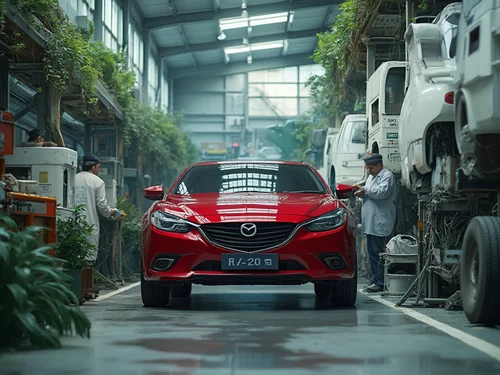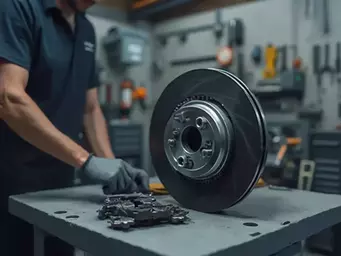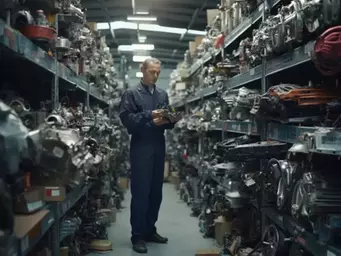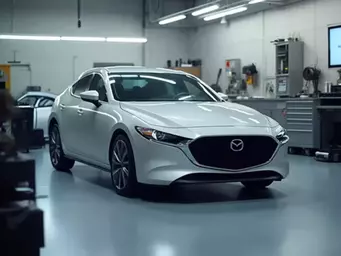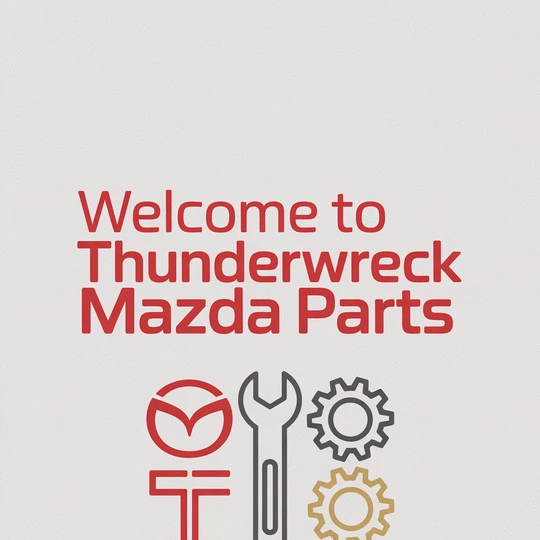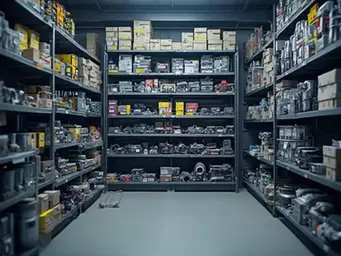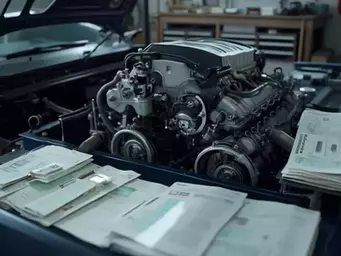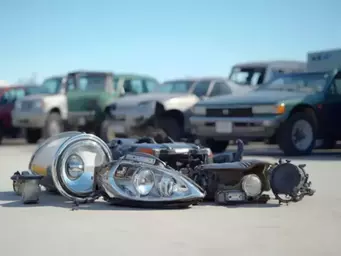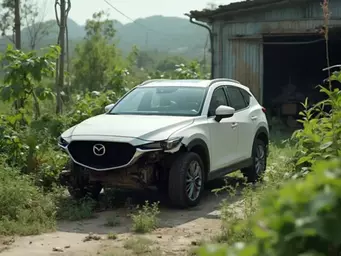Did you know that sustainable auto recycling can significantly reduce the environmental impact of the automotive industry? As Mazda owners, understanding the practices driving this change can empower us to make eco-friendly choices for our vehicles.
What You Will Learn
- The key sustainable auto recycling techniques, including material recovery and eco-friendly processing.
- The importance of responsible disposal and reusing components to minimize waste.
- How Mazda's commitment to sustainability enhances brand image and consumer trust.
- Future trends in auto recycling, such as innovative technologies and broader industry collaborations.
Sustainable Auto Recycling Techniques and Mazda's Commitment
This visual outlines key aspects of sustainable auto recycling and highlights Mazda's initiatives in promoting a greener automotive industry.
What Defines Sustainable Auto Recycling?
Material Recovery
Extract usable parts & materials
Eco-Friendly Processing
Reduce environmental impact
Responsible Disposal
Handle hazardous materials safely
Reusing Components
Refurbish or repurpose parts
Importance of Sustainability
- • Reducing Landfill Waste
- • Lowering Production Costs
- • Conserving Natural Resources
- • Enhancing Brand Image
Mazda's Commitment to Sustainability
Historical Initiatives
Minimizing ecological footprint from manufacturing to disposal.
Partnership with Infinitev
Battery lifecycle management for EVs, ensuring proper recycling.
ELV Lifecycle & Key Recycling Stages
Manufacturing
Usage
End-of-Life
Recycling
Key Takeaways for Consumers
- • Resource Recovery Max. Lifespan
- • Eco-friendly Practices Reduce Waste
- • Consumer Participation Amplifies Impact
Future Trends & Consumer Action
Innovative Technologies
New methods for efficiency & recovery.
Choose Secondhand Parts
Cost-effective & eco-friendly choice.
Understanding Sustainable Auto Recycling Techniques in Australia
At ThunderWreck Mazda Parts, we believe understanding sustainable auto recycling techniques is crucial for every Mazda owner. With the automotive industry evolving rapidly, it’s essential to grasp the methods that support both the environment and the performance of your vehicle. Sustainable practices not only help in conserving precious resources but also contribute significantly to reducing our carbon footprint!
So, what are these sustainable techniques? In essence, they involve the systematic recovery of materials from end-of-life vehicles (ELVs) and ensuring that every component is utilized effectively. It’s not just about dismantling cars; it’s about doing so with a purpose—preserving the planet while keeping your Mazda running smoothly.
What Are Sustainable Auto Recycling Techniques?
Let's break down the definition of sustainable practices in auto recycling. These techniques encompass various processes aimed at minimizing waste and maximizing resource recovery. Here’s a quick list of key aspects:
- Material Recovery: Extracting usable parts and materials from vehicles.
- Eco-Friendly Processing: Using methods that reduce environmental impact during recycling.
- Responsible Disposal: Ensuring hazardous materials are disposed of safely and ethically.
- Reusing Components: Giving a second life to parts that can be refurbished or repurposed.
Emphasizing sustainability in auto recycling is vital for several reasons. It not only supports a cleaner environment but also fosters a circular economy, where resources are kept in use for as long as possible. This approach benefits both the planet and your pocket!
Defining Sustainable Practices in Auto Recycling
Sustainable practices in auto recycling focus on reducing waste and promoting resource efficiency. As a proud Mazda parts recycler, I can attest that every part we salvage is inspected thoroughly to ensure it meets our high standards. This process is not just about savings; it’s about integrity and reliability in the parts we provide to our customers. The transition to a sustainable circular economy, as highlighted by the Department of Energy, underscores the importance of these practices.
When we talk about sustainability, it’s also about fostering a culture of reuse and recycling within the automotive community. Every Mazda owner can play a part in this mission by choosing secondhand parts over new. It’s a simple decision that can lead to significant benefits for our environment!
Importance of Sustainability in the Automotive Industry
The automotive industry has a substantial impact on our environment, making sustainability paramount. By adopting eco-friendly recycling techniques, we can mitigate this impact. Here are a few reasons why sustainability is crucial:
- Reducing Landfill Waste: Proper recycling helps divert vehicles from landfills. The EPA's data on automotive manufacturing waste management demonstrates the positive trend in waste reduction through recycling.
- Lowering Production Costs: Reusing parts reduces the need for new materials.
- Conserving Natural Resources: Recycling ensures that valuable resources are not wasted.
- Enhancing Brand Image: Companies that prioritize sustainability often enjoy increased consumer trust.
As more Mazda owners become aware of these benefits, the demand for sustainable practices will grow, pushing the industry towards a greener future. At ThunderWreck, we’re proud to be part of this positive change!
Overview of Mazda's Commitment to Sustainability
Mazda has long been dedicated to environmental responsibility. Their commitment to sustainability is evident through innovative projects, such as partnerships aimed at enhancing recycling practices. This dedication not only benefits the company but also helps Mazda owners like us feel good about the vehicles we drive!
In recent years, Mazda has taken significant steps towards reducing its environmental impact. One of the most notable initiatives has been their collaboration with Infinitev, focused on battery lifecycle management for electric vehicles. This partnership emphasizes the importance of recycling and repurposing batteries, ensuring that they are handled responsibly.
Brief History of Mazda's Environmental Initiatives
For decades, Mazda has implemented various environmental initiatives aimed at minimizing its ecological footprint. From the manufacturing of vehicles to disposal, Mazda's focus on sustainability is evident at every stage. Their efforts have not only improved operational efficiency but have also set a benchmark for other manufacturers. General Motors' 2023 Sustainability Report provides insight into similar industry-wide efforts towards a greener future.
Additionally, Mazda has spearheaded initiatives to promote the recycling of components from end-of-life vehicles, ensuring that each part gets a chance at a new life. This commitment aligns seamlessly with our mission at ThunderWreck Mazda Parts, where we prioritize eco-conscious practices.
Partnership with Infinitev for Battery Lifecycle Management
One of the standout collaborations in Mazda's sustainability efforts is with Infinitev. This partnership is focused on the lifecycle management of batteries, particularly for electric vehicles. Through this program, Mazda is ensuring that batteries are recycled properly and that valuable materials are recovered and reused.
As Mazda enthusiasts, we can take pride in knowing that our vehicles are part of a larger effort to protect the environment. Understanding these initiatives helps us appreciate our Mazdas even more and encourages responsible ownership!
The Role of End-of-Life Vehicles (ELVs) in Recycling
End-of-life vehicles play a critical role in sustainable auto recycling. When a vehicle reaches the end of its journey, it offers a unique opportunity for resource recovery. This is where businesses like ThunderWreck Mazda Parts step in, ensuring that every component is assessed, salvaged, and recycled whenever possible.
Properly managing ELVs not only reduces waste but also contributes significantly to environmental conservation. By understanding the lifecycle of vehicles and their components, Mazda owners can make informed decisions about their vehicle's end-of-life process.
Understanding the Lifecycle of Vehicles and Their Components
The lifecycle of a vehicle begins with manufacturing and extends through various stages, including use and eventual disposal. When a Mazda reaches the end of its lifecycle, we focus on salvaging valuable parts that can be reused or recycled. Here’s a quick overview of vehicle lifecycle stages:
- Manufacturing: The initial creation of the vehicle and its components.
- Usage: The time spent on the road, where maintenance and care are essential.
- End-of-Life: When the vehicle is no longer operational and can be dismantled for parts.
- Recycling: The process of recovering materials for reuse or proper disposal.
By understanding this lifecycle, we can appreciate the importance of responsible recycling practices and how we can all contribute to a more sustainable future!
Environmental Impact of Proper ELV Management
Managing end-of-life vehicles responsibly has a profound environmental impact. When vehicles are recycled properly, we can prevent hazardous materials from contaminating our landfills and waterways. Additionally, recovering metals, plastics, and other materials helps conserve natural resources.
At ThunderWreck, we ensure that every Mazda component is handled with care, maximizing resource recovery while minimizing environmental impact. This commitment to sustainability not only benefits our planet but also helps Mazda owners save money on quality secondhand parts!
Engage with Us!
We want to hear from you! How important do you think sustainable practices are in the automotive industry? Share your thoughts below:
Frequently Asked Questions About Sustainable Auto Recycling
What is sustainable auto recycling?
Sustainable auto recycling involves recovering usable parts and materials from end-of-life vehicles (ELVs), processing them in an eco-friendly manner, safely disposing of hazardous materials, and reusing components to minimize waste and conserve resources.
Why is sustainability important in the automotive industry?
Sustainability is crucial because it helps reduce landfill waste, lowers production costs by reusing materials, conserves natural resources, and enhances the brand image of companies committed to eco-friendly practices.
How does Mazda contribute to sustainable auto recycling?
Mazda demonstrates its commitment through historical environmental initiatives focused on minimizing ecological footprint from manufacturing to disposal. They also partner with companies like Infinitev for battery lifecycle management, ensuring proper recycling and reuse of EV batteries.
What is the role of End-of-Life Vehicles (ELVs) in recycling?
ELVs provide a significant opportunity for resource recovery. By properly managing ELVs, valuable parts can be salvaged, reused, or recycled, which reduces waste, prevents hazardous material contamination, and conserves natural resources.
How can consumers participate in sustainable auto recycling?
Consumers can participate by choosing secondhand parts for vehicle repairs (which is both cost-effective and eco-friendly), engaging in local recycling programs, and spreading awareness about the benefits of sustainable practices among other car enthusiasts.
Summarizing the Importance of Sustainable Auto Recycling
As we wrap up our discussion on sustainable auto recycling, it’s clear that Mazda's practices offer several key insights into how we can better care for our environment. Implementing sustainable techniques not only benefits the planet but also holds significant advantages for consumers. Here are some of the key takeaways that highlight this connection:
- Mazda's dedication to resource recovery maximizes the lifespan of automotive components.
- Utilizing eco-friendly practices reduces waste and conserves energy.
- Consumer participation amplifies the impact of recycling programs, creating a community of environmentally conscious Mazda owners.
These practices not only help our planet but also foster a sense of community among Mazda enthusiasts. By supporting sustainable recycling, we can all contribute to a cleaner and greener future.
Key Takeaways from Mazda’s Sustainable Practices
Recap of Techniques and Consumer Benefits
In summary, the innovative recycling techniques employed by Mazda and other auto recyclers offer numerous benefits. These include:
- Materials Sorting: Efficient sorting maximizes recovery rates.
- Energy-Efficient Methods: Reducing energy consumption during recycling processes.
- Utilization of Recycled Parts: Enhancing the lifecycle of components by incorporating them into new vehicles.
These techniques not only ensure high-quality parts but also provide significant cost savings for consumers. Engaging with these practices helps Mazda owners maintain their vehicles while being environmentally responsible.
Future Trends in Auto Recycling and Sustainability
The future of auto recycling looks promising! With the automotive industry increasingly focusing on sustainability, we can expect to see advancements such as:
- Innovative Recycling Technologies: New methods that improve efficiency and recovery.
- Broader Industry Collaborations: Partnerships across sectors to enhance recycling processes.
- Consumer Education Initiatives: Programs aimed at raising awareness about the benefits of sustainable practices.
By embracing these trends, we can further contribute to a circular economy, ensuring that resources are reused effectively and responsibly. I’m excited to see how we can all play a role in this positive transformation!
Legislation and Compliance Standards in Auto Recycling
The Role of Government Regulations in Promoting Sustainability
Government regulations play a crucial part in guiding the automotive industry's approach to recycling. These standards help ensure that recyclers adhere to environmentally friendly practices and prioritize sustainability. Some important regulations include:
- Waste Management Policies: Promoting recycling and proper disposal of end-of-life vehicles.
- Emission Standards: Ensuring compliance with air quality regulations during dismantling and recycling processes.
- Incentives for Eco-Friendly Practices: Encouraging businesses to adopt sustainable techniques through financial support.
Through these regulations, we can encourage better practices across the board, ensuring that the automotive industry is doing its part to protect our planet.
Understanding Recycling Certifications and Their Impact
Recycling certifications serve as important benchmarks for auto recyclers. They provide assurance that the recycling processes meet specific environmental standards. Key certifications include:
- ISO 14001: Focuses on effective environmental management systems.
- R2 Certification: Ensures responsible recycling of electronics and automotive parts.
- e-Stewards Certification: Guarantees ethical recycling practices and transparency.
These certifications not only highlight commitment to sustainability but also foster trust among consumers. At ThunderWreck Mazda Parts, we're proud to support practices that align with these standards, ensuring our customers receive high-quality, eco-friendly parts.
Encouraging Action Towards Sustainable Practices
As individuals, we can all make a difference in promoting sustainability. Here are some ways you can get involved in sustainable auto recycling initiatives:
- Choose Secondhand Parts: Opt for recycled components when repairing your vehicle. It’s a cost-effective and eco-friendly choice!
- Participate in Local Recycling Programs: Engage with community initiatives that support sustainable practices.
- Spread Awareness: Share information about the benefits of sustainable auto recycling with fellow Mazda enthusiasts.
Taking these actions not only helps the environment but also strengthens our community of Mazda owners committed to sustainability!
Connecting with Mazda and Other Stakeholders for a Greener Future
Engaging with Mazda and other stakeholders is essential for advancing sustainable practices in auto recycling. Here’s how you can connect:
- Follow Industry News: Stay informed about new initiatives and partnerships that promote sustainability.
- Join Local Mazda Clubs: Network with like-minded individuals who share your passion for eco-friendly practices.
- Support Sustainable Brands: Choose to purchase from businesses that prioritize sustainability, like ThunderWreck Mazda Parts!
By working together, we can create a greener future for the automotive industry. Let's embrace sustainability, one vehicle at a time!
Recap of Key Points
Here is a quick recap of the important points discussed in the article:
- Sustainable Auto Recycling Techniques: Focus on material recovery, eco-friendly processing, responsible disposal, and reusing components.
- Importance of Sustainability: Reduces landfill waste, lowers production costs, conserves natural resources, and enhances brand image.
- Consumer Involvement: Choosing secondhand parts and participating in local recycling programs can amplify the impact of sustainability efforts.
- Future Trends: Expect innovative recycling technologies, broader industry collaborations, and consumer education initiatives in sustainable auto recycling.

